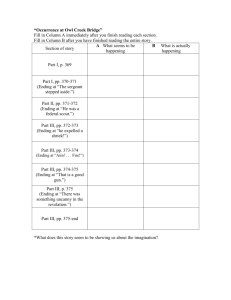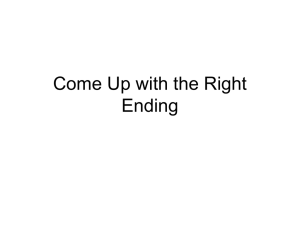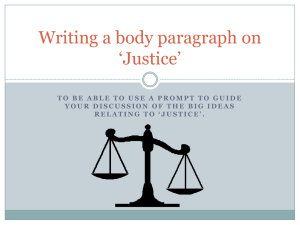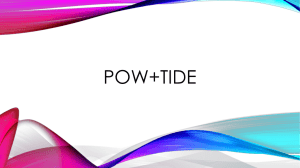Word Strategies
advertisement
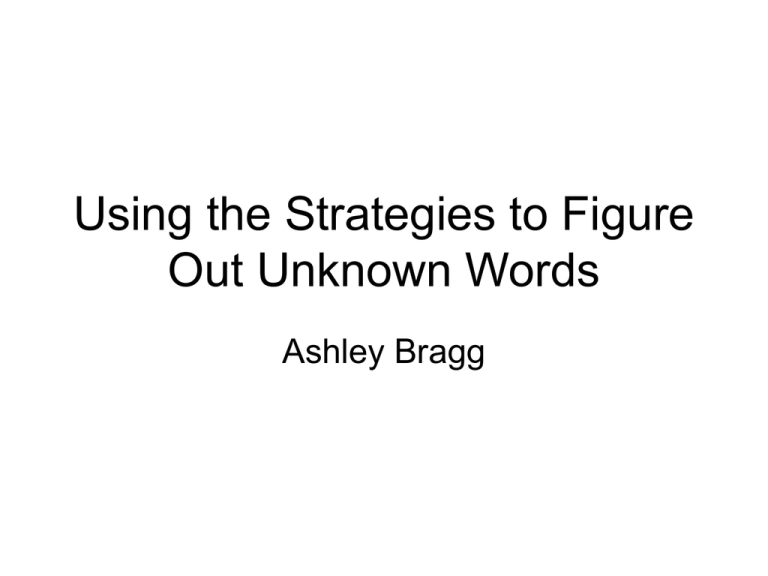
Using the Strategies to Figure Out Unknown Words Ashley Bragg There are six main strategies that help children find out words they do not know. 1. 2. 3. 4. 5. 6. Look at the picture. Get your mouth ready for the first sound. Find a word or part you know. Cover the ending. Skip the word and come back. Always think, “Does the word make sense, look right, and sound right?” Look at the Picture The first strategy a child should use when he comes to a word he doesn’t know is look at the picture. Ex) The lion on the hill is looking over the lion in the grass. Get your mouth ready. This means the student should get their mouth ready for the first letter or sound of the word. As they are doing this they should be thinking what would make sense. Example: The dog barked when the children passed by the yard. If they do not know the word, barked, they should get their mouth ready for the b sound and think what would make sense right there in the sentence. Find a word or parts of a word that you know. In many words, children can find parts or smaller words that they recognize inside the word that they do not know. **Prompt the child to use their fingers to find parts or words within the word that they know. Examples: became, delightful, independent Cover the Ending Often, a word looks much larger and much more confusing when an ending is added to the word. Endings that are added to words are: -ed -ing -s -ly If a child comes to a word they do not know, and the word has an ending, have the students cover the ending to help them figure out the word. Example: The boy walked to the other side of the building. Skip the word and come back. It is alright for the students to skip the word they do not know and come back, but it is very important for them to go back to the word. Once they go back, they should think, “What would make sense there?” After they come up with a word, they should ask themselves, “Does that word look right or do the letters match how it sounds and does it sound right?” Example of “Skip the Word and Come Back” The boy’s family came to visit the day before Christmas bringing lots of presents for everyone. 1st- read the sentence skipping the word they do not know. (presents) 2nd- go back and think of a word that would make sense. Let’s say pudding. Ex. Reread the sentence and think pudding (it makes sense). 3rd- see if the word sounds right. (pudding sounds right) 4th- see if the word looks right. (pudding does not look right because the word does not have a d or an ing at the end. SO… Go back and repeat steps 2 through 4. All of these strategies should be used to help students figure out unknown words. If a student is reading and cannot figure out a word, DO NOT simply tell them the word. Help them to figure it out by using these strategies. *If one strategy does not work, prompt the student to use another. EXAMPLE USING ALL STRATEGIES The doctor told the lady important news about her child’s accident. Strategy #1: use the picture (the picture probably won’t help with this word because it’s hard to show something being important, in a picture. SO…prompt student to use another strategy. Strategy #2: get your mouth ready The student should get his mouth ready for the i sound, but that may or may not help to figure out this word. SO…prompt student to use another strategy. EXAMPLE USING ALL STRATEGIES (cont) Strategy #3 Find a word or part of a word that you know. The student may use their fingers to find parts or words in important that they know. They know or, so hopefully they can put together port. They should also see the word an or ant. After the student finds these familiar parts, he may or may not be able to figure out the word. If not… Prompt the student to use another strategy. EXAMPLE USING ALL STRATEGIES (cont.) Strategy #4 Look to cover an ending. The word important does not have an ending; therefore, this strategy may not be too helpful with this particular word. SO… prompt student to use another strategy Strategy #5 Skip the word and come back: think what would make sense, does it sound right, and does it look right? After using these strategies, the student will probably have discovered the word important on their own. It should make sense, look right, and sound right! **Each time your child thinks they have discovered what a word is, have them reread using the word to make sure it makes sense, sounds right, and looks right (the letters seem to match the sound). They will develop these strategies, and be able to use them on their own! Although it seems that it would be much easier to simply tell the students the word they don’t know, it actually does them more harm than good. After prompting your student to use these strategies, they will soon be able to know which strategies to use to help themselves when seeing words they do not know. This is what makes students better readers; knowing how to help themselves find out unknown words.
